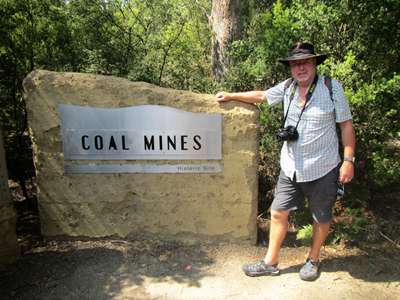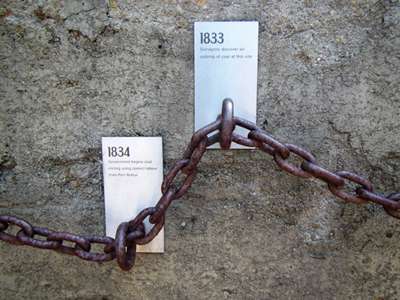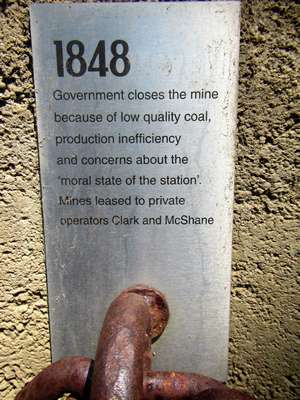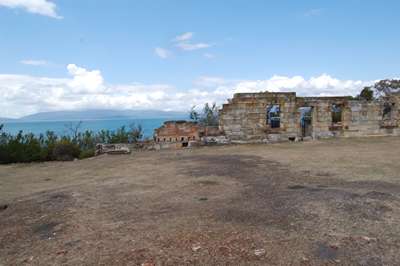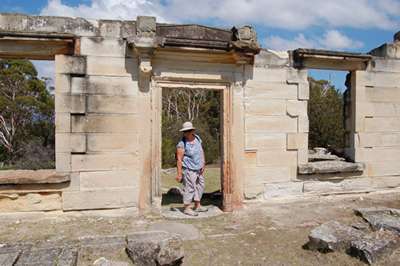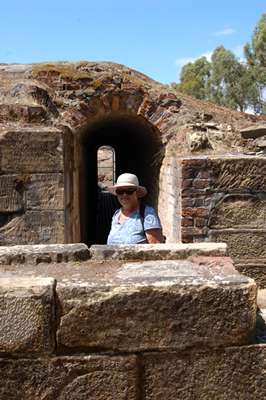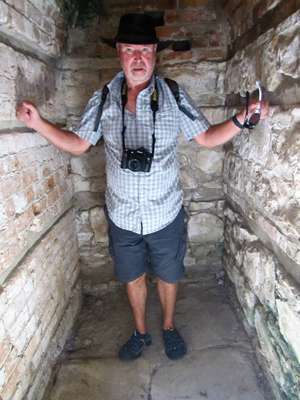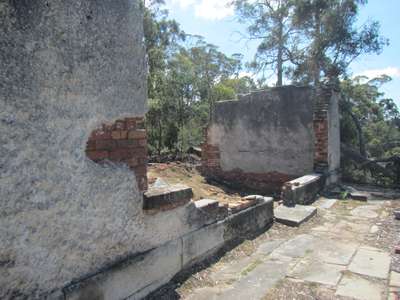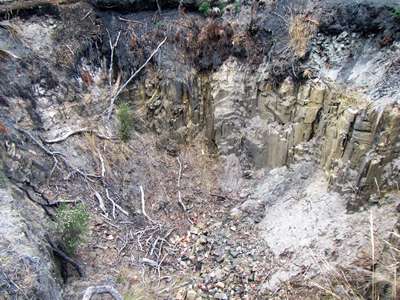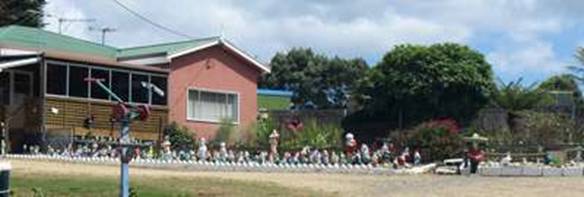Coal Mine

|
Friday 12th February 2016 We started the day with a drive to the north-western
tip of the peninsula to see the Coal Mines Historic Site, significant as
Tasmania’s first operational coal mine. An outcrop of coal was
first discovered at Plunkett Point by surveyors in 1833, and its value was
immediately recognised by Lt. Governor Arthur. Not only would it provide a
local supply of coal, reducing their dependence on and cost of coal from New
South Wales, but a mine would provide a place of harsh punishment for the worst
or persistent offenders. So a convict with practical mining knowledge, Joseph Lacey,
was sent with a small party of convict labourers to begin the work, and the
first shipment of coal left the mine in June 1834 aboard the Kangaroo.
By 1839 there were 150 prisoners and 29 officers stationed at the mine.
Five years later there were 579 prisoners, 27 soldier guards, 35 civilian
supervisors and administrators, 14 of their wives and 90 children. Only
convicts who were skilled miners worked on the coal face, and each had three
convict labourers to take away the coal. However, the mine was badly
managed and inefficient, and was closed in 1848 on both ‘moral and
financial’ grounds. We began at the Convict Precinct and explored the sandstone
remains of the convict buildings - the barracks, chapel, bakehouse and store, and
separate apartment cells and solitary punishment cells added in 1846 in an
attempt to reduce the incidence of homosexuality.
At the entrance to the site is an information and
interpretation area with a chain time-line showing the development of the mine.
Remains of the sandstone buildings in the Convict
Precinct.
A solitary confinement punishment cell. We then walked up the hill to the remains of the Officers’
quarters.
Such a lovely place to live – no wonder they built
the Officers’ quarters out of site of the convict buildings and the mine.
Remains of an Officer’s house –brick walls rendered
outside and plastered inside. Very different from the sandstone block buildings down
the hill. We didn’t have enough time to walk to the mine shaft, as
we were due back at Port Arthur for the Point Puer tour after lunch, so we
drove up the unsealed road to the top car park and walked from there. We
were glad we hadn’t walked, as there wasn’t actually that much to
see, although the information boards were interesting.
This hole in the ground is all that’s left of the
main shaft. On the way back to Port Arthur, on a winding road in the
middle of nowhere, we passed this house with hundreds of garden gnomes in the
front garden!
Hundreds of gnomes – they made us smile! |
